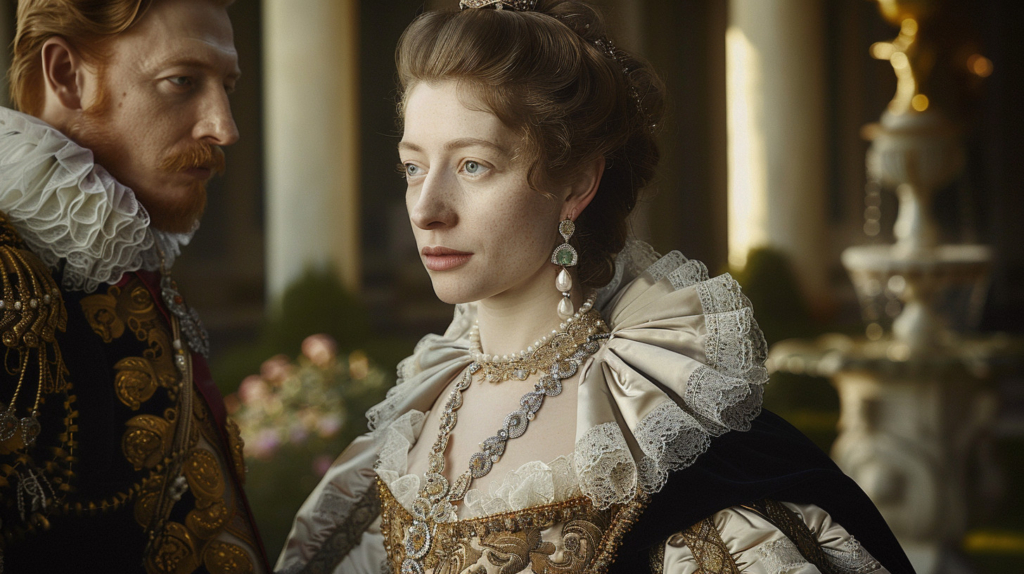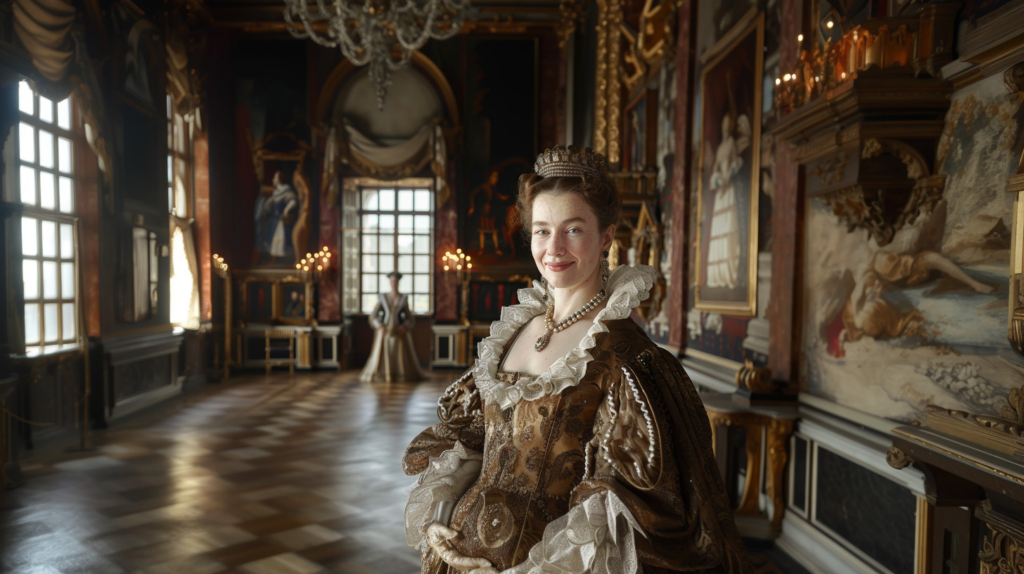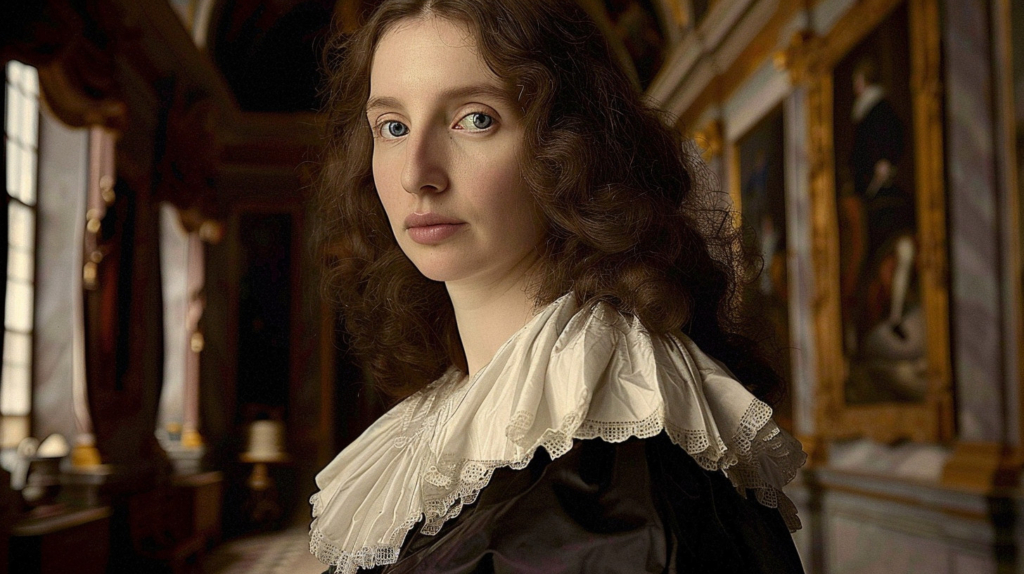Just like her mother-in-law, Maria Eleonora of Brandenburg have been vilified throughout history. But the criticism of Maria Eleonora has been the opposite of that of Kristina – she was too extravagant, too emotional and – according to the men of her time – incapable to rule.
Not much is known about her earlier years. She was born on November 11, 1599, in Köningsberg as the third child of Johann Sigismund, elector of Brandenburg, and Anna of Prussia. She and her siblings were mostly raised by their mother, who was a formidable woman.
As we saw in the post about her mother-in-law, Kristina of Holstein-Gottorp, the Swedish king Gustav II Adolf was in love with a noble lady at his court – Ebba Brahe. But his mother forbade the match since she wanted an alliance with a German state. Since Sweden was at war with Poland, Brandenburg would be a suitable ally because of it’s strategic location.
At first, Maria Eleonora’s parents were not interested, but Kristina was not a woman to be deterred. She sent Gustav Adolf on a secret journey to Brandenburg in 1620 to meet the young lady, and Maria Eleonora fell head-over-heels with the king. Even her reluctant mother was convinced, and in an almost coup-like fashion she took her daughter to Sweden to be married.
On October 7 the same year, the almost 20-years-old Maria Eleonora arrived in Kalmar, where she was met by the king. The wedding was held at Stockholm on the 25th of November, and three days later she was crowned queen of Sweden.

Maria Eleonora is said to have loved her husband very much – too much, even. He was often away at war, and then his wife was in a state of despair and often sick with worry. When he returned she recovered and said she was “in heaven”.
The young queen must have felt the pressure to produce the longed-for heir – meaning a prince. And she quickly became pregnant. But her concerns for her husband’s safety were so great, and when he returned to the front, she had a miscarriage the very same day.
In 1623 she became pregnant again, and this time the king made sure to be home in time for the birth. Maria Eleonora gave birth to a daughter, Kristina Augusta. It was not the prince they had hoped for, but the royal couple was said to be happy. But not even a year later the child died.
The next year a Maria Eleonora gave birth to a stillborn son. She must have been devastated, having lost three children and constantly worrying about her husband. Moreover, she did not feel at home in Stockholm, which vas considerably smaller and poorer than Berlin, where she used to live.
She also found the culture greatly neglected, and she brought musicians, ballet masters, goldsmiths and others who would brighten the Swedish court. She was interested in architecture and had many plans to build beautiful palaces in the capitol, but the treasury was all but empty.
She hadn’t received any dowry from Brandenburg either, so she took large loans to maintain a glamorous lifestyle and incurred huge debts.
She has been strongly criticized for this, both in her own time and after, but Maria Eleonora was in a difficult position. As queen she was expected to surround herself with luxury and flair, and probably felt strongly pressured to do so, despite the lack of money.

However, a glimmer of light appeared in the summer of 1626 when she got pregnant again. This time, too, Gustav Adolf came home in time for the birth. On December 7 the child was born – and it was to great joy. Finally the queen had given birth to a prince!
Or had she?
When the child was born it was covered head to knees in the fetal membrane, and screamed with such strong voice that those present assumed that the child was a boy. The rumours spread – a prince was born! The cannons fired a salute.
But – when the child had been wiped clean it turned out to be a girl. At first, no one dared to go and tell the king. It was his half-sister, Katarina, who eventually plucked up the courage and carried the girl to her father.
But the fury everyone expected didn’t come. In stead, Gustav Adolf laughed and said that ”She will grow cunning with time, for she has deceived us all”, and proclaimed that he loved her as dearly as if she had been a son.

At least according to Kristina’s autobiography. For the child was of course no other than the future queen Kristina (pictured above) – or KING Kristina as she should be called, since she later was to be crowned king and not queen. But we’re getting ahead of ourselves.
Find out more in next post!
Sources:
Lindqvist, Herman. Historien om alla Sveriges drottningar. (2006)
Matthis, Moa. Maria Eleonora – Drottningen som sa nej. (2010)
Tegenborg, Falkdalen, Karin. Svenska drottningar – i blickfånget från Vasatiden till idag. (2020)

